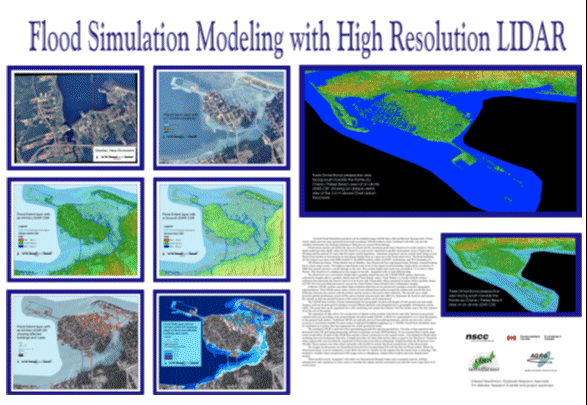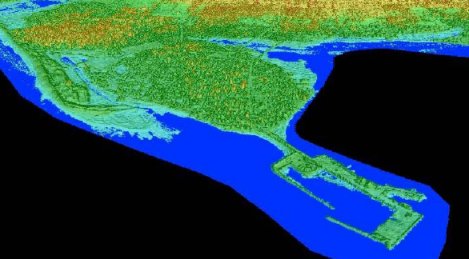3D Flood Modeling with LIDAR
The main goal of this project was to generate flood maps and DEMs with better than 30 cm vertical accuracy for the coastal area of southeastern New Brunswick.
The main goal of this project was to generate flood maps and DEMs with better than 30 cm vertical accuracy for the coastal area of southeastern New Brunswick.
I created and presented the following poster that summarized my Flood Simulation Modeling with High Resolution LIDAR project as part of my Applied Geomatics graduate work at COGS in 2004. The areas in the poster are of Shediac & Parlee Beach, New Brunswick



The above two images were created for my LIDAR flood modeling graduate research project. The first image is before the flood scenario; featuring a color shaded relief perspective view pointing south east from the Northumberland Strait landwards across the Pointe Du Chene wharf. The second image is of the same color shaded relief perspective view but features a 2.55 m flood level super imposed on top of it.
The 2.55 m flood level was an actual recorded storm surge water level that effected this area during a winter storm on January 2001. The two images below show the same flood level and area but from an overhead aerial view. The first image is with an orthophoto and the second image is with the color shaded relief.


The following co-authored paper featuring my graduate LiDAR research work at the AGRG was published in the Canadian Journal of Remote Sensing in 2006. Airborne light detection and ranging (LiDAR) has the spatial density and vertical precision required to map coastal areas at risk of flooding from water levels typically 1–2 m higher than predicted tides during storm surges. In this study …
